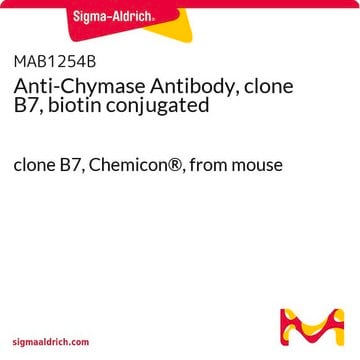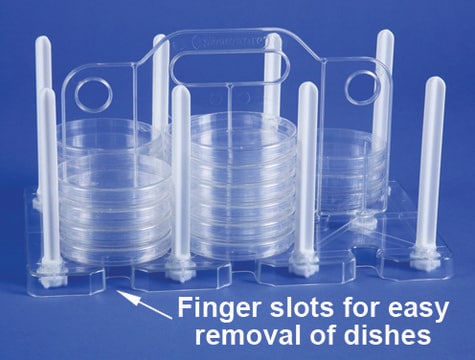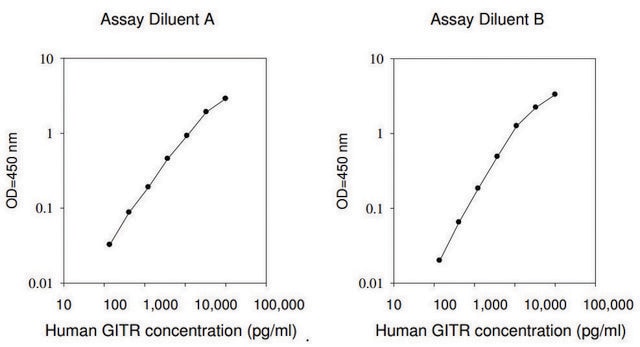MAB1254
Anti-Chymase Antibody, clone B7
clone B7, 2.4 mg/mL, Chemicon®
Synonyme(s) :
Mast Cell Protease I
About This Item
Produits recommandés
Source biologique
mouse
Niveau de qualité
Forme d'anticorps
affinity isolated antibody
Type de produit anticorps
primary antibodies
Clone
B7, monoclonal
Espèces réactives
human
Fabricant/nom de marque
Chemicon®
Concentration
2.4 mg/mL
Technique(s)
dot blot: suitable
immunohistochemistry: suitable
Isotype
IgG1κ
Adéquation
not suitable for Western blot
Numéro d'accès NCBI
Numéro d'accès UniProt
Conditions d'expédition
wet ice
Modification post-traductionnelle de la cible
unmodified
Informations sur le gène
human ... CMA1(1215)
Description générale
Spécificité
Immunogène
Application
Immunohistochemistry: 0.5-1.0 μg/mL. For optimal results, tissues or cytospin preparations should be fixed in Carnoy′s Fluid (60% ethanol, 30% chloroform, 10% glacial acetic acid). Not recommended for use on formaldehyde fixed tissue.
Not recommended for use on Western blots.
Optimal working dilutions must be determined by end user.
Inflammation & Immunology
Inflammation & Autoimmune Mechanisms
Forme physique
Stockage et stabilité
Remarque sur l'analyse
POSITIVE CONTROL: lung, heart, skin, placenta.
Informations légales
Clause de non-responsabilité
Not finding the right product?
Try our Outil de sélection de produits.
Code de la classe de stockage
12 - Non Combustible Liquids
Classe de danger pour l'eau (WGK)
WGK 1
Point d'éclair (°F)
Not applicable
Point d'éclair (°C)
Not applicable
Certificats d'analyse (COA)
Recherchez un Certificats d'analyse (COA) en saisissant le numéro de lot du produit. Les numéros de lot figurent sur l'étiquette du produit après les mots "Lot" ou "Batch".
Déjà en possession de ce produit ?
Retrouvez la documentation relative aux produits que vous avez récemment achetés dans la Bibliothèque de documents.
Notre équipe de scientifiques dispose d'une expérience dans tous les secteurs de la recherche, notamment en sciences de la vie, science des matériaux, synthèse chimique, chromatographie, analyse et dans de nombreux autres domaines..
Contacter notre Service technique







